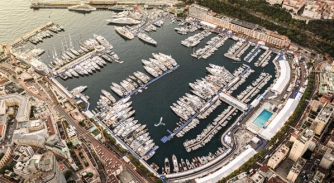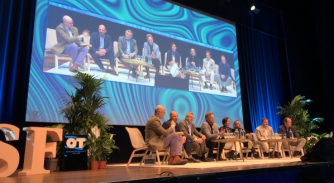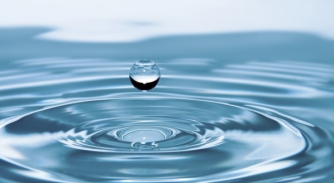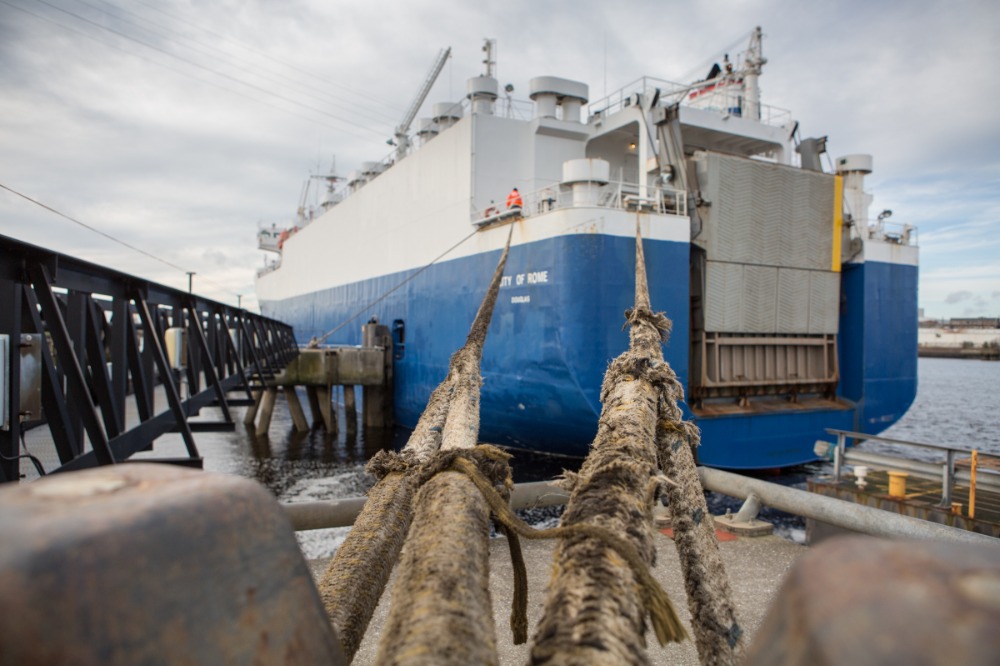Straight to the source
How can The National Grid and UK commercial ports inform the superyacht industry's decarbonisation strategy? …
The fascinating Day Two discussion at The Superyacht Forum Live 2021 on the transition to alternative fuels highlighted many hurdles to development. Hydrogen production for superyachts and the electrification of our marinas, shipyards and refit facilities will all require a lot of energy. While the industry debates where this energy may come from in an idealised future, the reality is that it will, for now, come from the existing network. So why not speak to the source - The National Grid?
National Grid Electricity Transmission (NGET) has partnered with Siemens to create a free online tool to help UK ports meet their net-zero targets. With the support and guidance from the British Ports Association (BPA), the decarbonisation tool will help ports forecast the future infrastructure required to meet the potential increased demand for electricity from zero-emission port operations.
In a timely conversation with SuperyachtNews, Dr Russell Fowler, senior project manager for decarbonisation of transport at National Grid, outlines the data that The National Grid hope their tool will generate from the marine industry in the UK, with the conversation, in turn, providing some concrete guidance for the superyacht sector.
The discussion at The Superyacht Forum Live, and many others before and since, focussed on the lack of infrastructure for hydrogen adoption. The chicken and egg situation whereby encouraging owners and yards to convert to hydrogen and zero-emission systems is hampered by a lack of infrastructure. At the same time, marinas and facilities are hesitant to commit to infrastructure investment without a clear picture of what to install, which creates an often-quoted stumbling block to the next stage of development.
The clock is ticking. And we are behind other industries on many fronts. However, we are not alone, and it's the perfect time to expand the conversation and look at simple solutions. "Everyone knows that the end goal is to decarbonise all transport, regardless of how we get there", starts Dr Fowler. "Different countries have different targets, and we have the UK specific services to look at UK shipping in UK port infrastructure."
“We all know that 2050 is our North Star for decarbonisation, but what are the specific targets, 2040? 2035? We need to get it right, and we need to get feedback from consumers." States Dr Fowler.
It starts with electrification, as Dr Fowler explains: "When looking at ports, the discussion is around the electricity requirements for energy-intensive operations such as cranes. But what about the next level? It looks like electrification will probably not be the solution for heavy and long-range shipping, so that they will be looking at hydrogen or alternative fuels. Hydrogen can be produced onsite, so does that make more sense than shipping it in?"
Dr Fowler mentions that onsite production is an obvious advantage over diesel, but it is an energy-intensive process, as is the electrification of onsite operations. Dr Fowler and this team hope this tool will help them facilitate these changing demands. "Are these ports looking to do the bare minimum, or could they become a hub for hydrogen production and heavy electrification?", continues Fowler. "Our tool is about understanding the size of demand."
Explaining for this journalist's benefit the interplay between the National Grid and its suppliers, Dr Fowler outlines the dynamic of high demand/supply: "When there is an extensive customer we take it directly to them; think a large steel or chemical works, think Network Rail - high-density energy consumers. When we looked at it closely, we realised that ports could become a major customer; therefore, will a high voltage direct connection be the most efficient solution?"
"If a port wants to do everything - shore power, electrify all shoreside infrastructure, producing hydrogen - by a certain date, then we can say 'ok, we need to build and provide this level of upstream infrastructure, substations etcetera'" While not in its initial planning, Dr Folwer examined the potential for the superyacht sector; "It may be that a superyacht marina or facility is too small to have a direct line to the national grid, but a group together in an area could."
Electrification of commercial ports is the first step, and hydrogen is the next priority. As our industry grapples with infrastructure issues, we should also look to communicate our requirements to the existing networks. As Dr Fowler explains, superyachts and smaller hydrogen-powered vessels are not necessarily high on the list of The National Grid's priorities: "Concerning hydrogen, the interesting thought for us is how much will these ships need themselves, will they draw from a larger resource? You have certainly got some thoughts going in our minds about smaller vessels. Up until this point, we have been focused on the larger ships, but this has have opened our thinking to the next tier down."
I highlighted the key points from the alternative fuels discussion from The Superyacht Forum Live to Dr Fowler, to which he provided some fascinating feedback from a source outside the industry. "The discussion you outlined sounds like the discussion that light vans and trucks were having a couple of years ago. They started with the same dilemma; 'well, if we don't know what solution will be implemented, we should wait and see what comes along. We are waiting to be told what to do, and oh, wait, there is no grid anyway, so we cant invest.' It's a vicious cycle."
"The cycle gets broken in certain ways, either a technology wins, as we have seen with cars where EVs have clearly taken off and got ahead of hydrogen, for example," Dr Fowler continues, "and then you see on the other side, with government intervention through funding things like charging points and bringing down the cost of EVs. With trucking, we see a high level of support for hydrogen."
“Once you have local hydrogen production, ensuring you have contracted renewable energy from the grid, and making sure you have the credits for the renewable power, you can create your own hydrogen network.” Affirms Dr Fowler
Some of the more ambitious talking points at The Superyacht Forum Live interrogated the prospect of the hydrogen grid, to which Dr Fowler has a clear answer. "The grid may be the enduring solution for hydrogen, but certainly in the short to medium term, it's going to be local hydrogen production. Get an electrolyser on-site, and we will supply the most effective amount of electricity. The electrolysers are modular and can be sized to meet your demands."
“You don't need the pipes (hydrogen grid). What you need is an electrolyser and you need the grid infrastructure and the electricity infrastructure to be able to use it. That is what this tool does for us as a supplier- If you're looking at producing this much hydrogen, this is the thickness of wire required.” Says Dr Fowler.
Concluding on the subject of the lionised hydrogen network, Dr Fowler is succinct; "If you want to wait for the hydrogen grid to come along you, that's a long delay because it represents a huge infrastructure investment. You need to make the whole grid hydrogen, with everyone on board. We would definitely recommend looking down the road at the local hydrogen production via electrolysis, and that's certainly what the trucking industry is looking at."
Dr Fowler has a refreshingly clear vision and advice. Although UK-centric and, at this stage, focusing on commercial ports, it paints an imminently achievable model of a path to decarbonisation. Of course, I am under no illusions that the energy grids of the majority of Europe and the world are not green. Piping coal-fired electricity to make hydrogen is not the solution in itself. But the grid is not our problem either, nor do we have the power to change it, no matter how influential we feel we are as an industry. Once the grids go green, it would be inexcusable if we did not have hydrogen capacity already in place.
As superyacht specific lifecycle assessment tools, such as YETI, from the Water Revolution Foundation, start to grapple with the idiosyncrasies of a superyacht's impact holistically, the all-important data is beginning to flow. With this, we can also draw on the work of key players from outside our industry, such as Dr Fowler and The National Grid, to connect our innovations with the established systems and authorities that have, to put it bluntly, been working on these solutions for longer than we have.
NEW: Sign up for SuperyachtNewsweek!
Get the latest weekly news, in-depth reports, intelligence, and strategic insights, delivered directly from The Superyacht Group's editors and market analysts.
Stay at the forefront of the superyacht industry with SuperyachtNewsweek
Click here to become part of The Superyacht Group community, and join us in our mission to make this industry accessible to all, and prosperous for the long-term. We are offering access to the superyacht industry’s most comprehensive and longstanding archive of business-critical information, as well as a comprehensive, real-time superyacht fleet database, for just £10 per month, because we are One Industry with One Mission. Sign up here.
Related news

How do you solve a problem like marinas?
Does the impending marina-capacity crisis present opportunities as well as challenges for the superyacht market?
Business

Fuelling the Future: what makes sense in next-generation power?
A panel of experts from across the marine and energy sectors define the best solutions for a decarbonised future
Fleet

Defining sustainability - EU Taxonomy Regulation
A profound conversation with Dr Vienna Eleuteri, initiator & vice chair of Water Revolution Foundation
Business
.jpg)
Hydrogen powered propulsion is coming to the Thames
How decarbonising a London icon may outline a template for the superyacht sector to hit its targets
Technology
Related news
How do you solve a problem like marinas?
4 years ago
Defining sustainability - EU Taxonomy Regulation
4 years ago
NEW: Sign up for
SuperyachtNewsweek!
Get the latest weekly news, in-depth reports, intelligence, and strategic insights, delivered directly from The Superyacht Group's editors and market analysts.
Stay at the forefront of the superyacht industry with SuperyachtNewsweek




